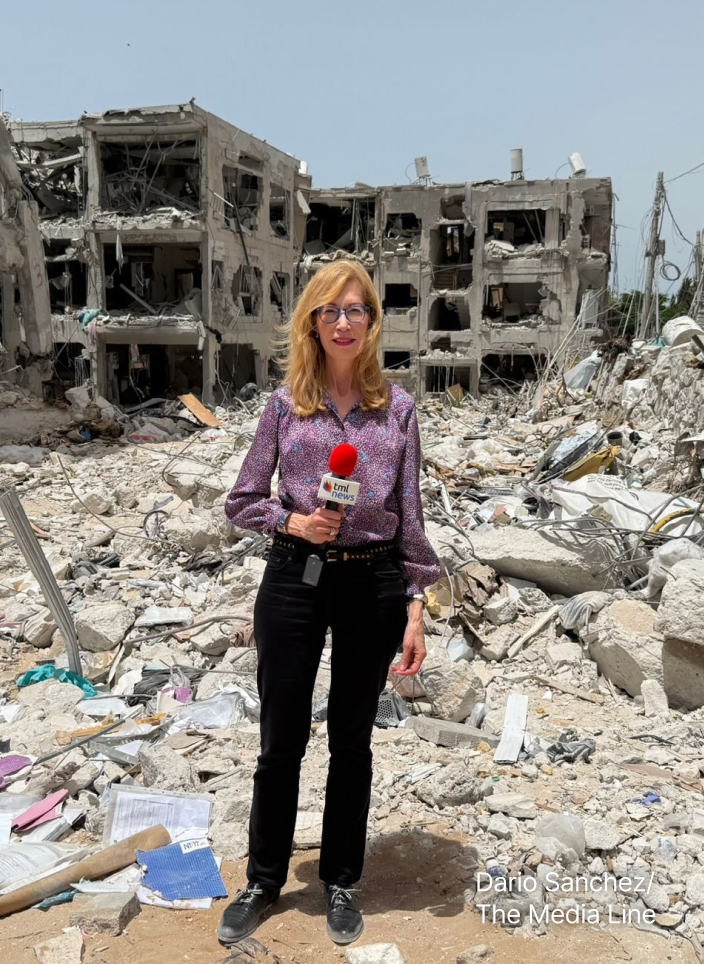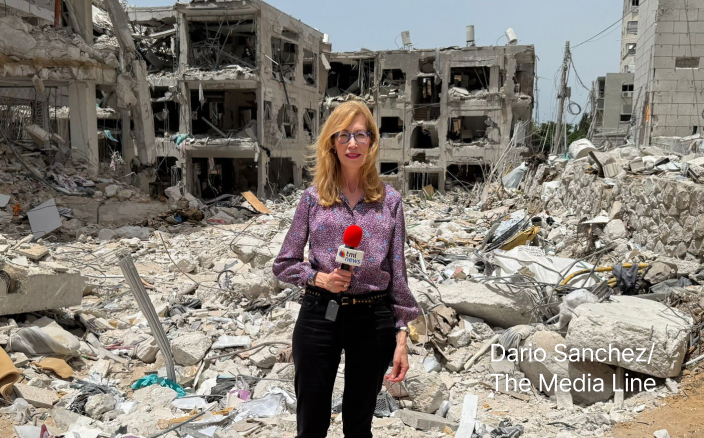Fragile Ceasefire Deal That Will See Partial Release of Israeli Hostages Hangs in the Balance
Tensions remain as details of the ceasefire face last-minute challenges and require approval by Israel's government
Fifteen months after the war between Hamas and Israel began, the warring sides have reached a ceasefire agreement.
Qatari Prime Minister Mohammed bin Abdulrahman Al Thani confirmed the agreement on Wednesday night, announcing it would begin implementation on Sunday. The deal, if fully completed, could spell the end of the war in Gaza which quickly escalated into a regional conflict.
Hours later, Israeli Prime Minister Benjamin Netanyahu’s office released several statements claiming the deal had not been finalized, blaming Hamas for creating a “last-minute crisis … in an effort to extort last-minute concessions.”
Hamas and other Palestinian factions welcomed the deal. The Israeli cabinet is required to approve it and is expected to do so, despite a heated debate going on in the country about the price Israel is paying for the gradual release of its hostages.
Ninety-eight Israeli hostages are currently being held by Hamas, of the 250 that were taken into captivity during Hamas’ October 7, 2023, attack on Israel which began the war. Four of the remaining hostages were captured before the current war. Those are two civilians—Avera Mengistu and Hisham al-Sayed—who are being held in the Gaza Strip after straying there accidentally, and the bodies of two Israeli soldiers—Hadar Goldin and Oron Shaul—who were killed in a military operation in 2014.
What’s in the Deal
According to reports, the ceasefire agreement is expected to take effect on Sunday at noon. Israel will stop its military operations in the Gaza Strip. In return, Hamas will release five female Israeli soldiers and two Israelis who also hold American citizenship.
In the following weeks, a total of 33 Israeli hostages, their fate still unknown, are expected to be released in stages, perhaps two or three at a time with days in between each release. The Israeli military will gradually withdraw from the Gaza Strip, with conflicting reports about the extent of its withdrawal. It is unclear whether the army will maintain a presence in two areas critical for Israel.
One is the Philadelphi Corridor, a narrow strip of land along Gaza’s border with Egypt, which served as Hamas’ main lifeline for over two decades by using the corridor’s underground tunnel network and the aboveground crossing to smuggle in arms. The second is the Netzarim crossing, which essentially cuts Gaza in half.
The agreement ends the war without explicitly saying so
“The agreement ends the war without explicitly saying so,” Brig. Gen. (res.) Yossi Kuperwasser, from Misgav Institute for National Security and former head of the Research Division in Israeli military intelligence. “Hence, Hamas has achieved its goal, and Israel is completing the process of paying the price for the blunder of October 7th.”
Sixteen days into the deal, negotiations about the remainder of the hostages and the second stage of the deal are set to begin.
Each side is taking large safety margins in order to safeguard their achievements
“Each side is taking large safety margins in order to safeguard their achievements. These large gaps between each stage have the potential of putting the deal at risk,” Col. (res.) Dr. Moshe Elad, a lecturer at Western Galilee College and a former senior military officer who served in the West Bank, Gaza, and Lebanon, told The Media Line. “Hamas wants to secure the release of prisoners before releasing hostages. Israel will not release terrorists unless Hamas releases the hostages. Both sides have an interest in making it work.”
Give the gift of hope
We practice what we preach:
accurate, fearless journalism. But we can't do it alone.
- On the ground in Gaza, Syria, Israel, Egypt, Pakistan, and more
- Our program trained more than 100 journalists
- Calling out fake news and reporting real facts
- On the ground in Gaza, Syria, Israel, Egypt, Pakistan, and more
- Our program trained more than 100 journalists
- Calling out fake news and reporting real facts
Join us.
Support The Media Line. Save democracy.


Palestinians will be allowed to return to the northern Gaza Strip, an area which served as Hamas’ launchpad for its attack.
“This is a multi-stage and temporary deal which allows both sides to rest and re-group while allowing both sides to say they reached achievements,” Ido Zelkovitz, head of the Middle Eastern Studies program at Yezreel Valley College and a research fellow in the Chaikin Chair of Geostrategy at the University of Haifa, told The Media Line. “Hamas can tell Palestinians that it has secured the return of the displaced people to northern Gaza and Israel will see the return of some of the hostages.”
“It is a terrible deal in which neither side is fully satisfied and there is a big question mark on whether the first half of the deal will be fully implemented and there will be progress towards the second part,” Zelkovitz added.
At least 1,000 Palestinian prisoners, many of them serving life sentences for multiple counts of murder, will be released from Israeli prisons. While Israel reportedly sought the exile of the prisoners outside of territories controlled by the Palestinians, it is reported that most of them will either be deported to the West Bank or the Gaza Strip.
Once finalized, the list of prisoners to be released is submitted for public review in Israel, giving the families of their victims a chance to appeal to the court in an attempt to stop their release. Traditionally, the Israeli Supreme Court does not intervene in matters of national security, and it is unlikely it will accept the petitions.
Everyone Wants the Credit
With the war dominating world headlines for months and spanning to Lebanon, Yemen, Iran, and Syria, everyone is looking to get the credit for ending it.
The outgoing US American administration headed by President Joe Biden led over a year of efforts to reach a ceasefire. Those efforts almost reached fruition last May, only to reach an impasse between the sides, each blaming the other. Incoming President Donald Trump demanded a faster solution, threatening there would be “all hell to pay” if the hostages were not released by his January 20 inauguration.
“There is no major difference between the May proposal, other than Hamas willing to accept conditions that it did not before – namely not forcing Israel to hold its fire and immediately withdraw from Gaza,” said Zelkovitz. “The change of administration and the new pressure exerted did have an impact, but the Trump administration didn’t reach any new deal that changes the reality.”
The war, which began as a conflict between Hamas and Israel, quickly evolved into a regional war. The Lebanese-based Hezbollah organization created another front for Israel in the north. A ceasefire currently in place between Israel and Hezbollah came after the terrorist group was dealt a major blow. It joined the attack on Israel to help Hamas by creating another front to preoccupy Israeli forces, entangling them in more than one arena.
“Trump’s hoovering threat and Hamas’ loss of Hezbollah’s solidarity, as part of the whole weakness of the Iranian axis led Hamas to the conclusion that it’s better to let go of the fine print and agree to a deal that essentially brings to the end of the war,” Kupperwasser explained.
The Israeli government has blamed the Biden administration for tying its hands throughout the war. It applied pressure on Israel regarding the amount of humanitarian aid entering Gaza and delayed delivery of weapons in an attempt to strongarm Israel into modifying its offensive plans. Nevertheless, the Israeli military managed to weaken both Hamas and Hezbollah significantly. Coupled with the collapse of the Bashar Assad regime in Syria, which is also connected to Hezbollah’s downgraded posture in the region, it is not only President Biden and former President Trump who can take credit for the deal.
In Netanyahu’s first statement after the Qatari announcement on the deal said the Israeli leader first spoke to the US president-elect and then to the current American president, thanking them both.
“Both Biden and Trump applied major pressure on Israel, at some point applying pressure simultaneously, making a huge impact,” said Elad. “There is no credit to be handed out here. There was pressure from one side and the other side, Hamas and Israel, delivered.”
What Can Go Wrong
In the hours after the announcement of the deal, there were reports of a setback in the deliberations regarding the fine print. Israeli media reported there were differences regarding the identity of the prisoners Hamas was demanding to be released. The Israeli cabinet meeting which is needed to vote on the deal was delayed, putting the fate of the ceasefire in question.
This was just the beginning of what is expected to be a painstaking implementation process should the deal be approved by Israel.
The presence of the Israeli military in Gaza, at least in the first stages of the deal, creates continued friction with Hamas and incidents that could be perceived by either side as violations of the ceasefire.
“The army will likely hand down very precise rules of engagement for its forces in order to minimize the margin of error,” said Elad. “For Hamas, its tactic should be to make sure incidents don’t happen so that the Israeli military will withdraw as quickly as possible and have no incentive to return.”
After over a year of war, the distrust between the sides is at an all-time low. Israel doesn’t trust Hamas to release the hostages according to agreement but rather might try to release bodies first, keeping the live hostages as leverage. Hamas, which has witnessed Israel continuing to target Hezbollah targets despite a ceasefire, doesn’t trust Israel to hold its fire.
There are so many things that can go wrong, so many small details that could derail the deal
“There are so many things that can go wrong, so many small details that could derail the deal. It is really a question of whether the sides are motivated to disrupt the agreement,” said Kupperwasser. “It appears there is a strategic decision on all sides to end the war.”
The incremental nature of the deal, which elongates its implementation, is perhaps its greatest weakness. But also, it does not deal with the core of the conflict, rather it brings the sides back to where they were before the war.
“There is a big question about whether the first stage will be completed and if we will reach the second stage,” said Zelkovitz. “It is not clear how much Hamas has control over other armed groups in Gaza which might not adhere to the ceasefire. In addition, in accordance with Israel’s goals, it will not allow Hamas to remain in power in Gaza, putting in question the second stage of the deal.”
With the deal not addressing the larger issues that have plagued Israelis and Palestinians for decades, even a successful execution of it does not preclude a future, even deadlier, conflict between the sides.
“The deal does nothing to prevent Hamas from re-arming again,” said Kupperwasser. “If Israel is indeed required to withdraw from Philadelphi, Hamas will surely regroup, and Israel does not have a carte blanche to operate in Gaza according to this deal.”

